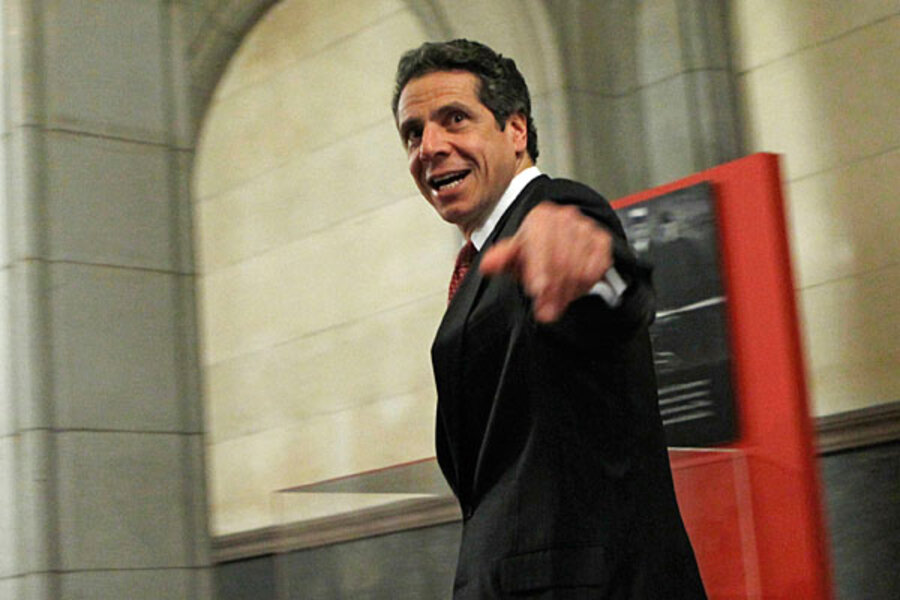New York to raise taxes on the rich. Is it a blueprint for Congress?
Loading...
In the state that's home to Wall Street, taxes on the rich are about to go up.
That's the hot-button headline from a budget deal announced Tuesday by bipartisan leaders in New York State.
The plan can be viewed in some ways as a microcosm of the larger debate in Washington over national finances. In both cases, a Democratic chief executive and a divided legislature face difficult budget deficits, a still-weak economy, and a public that doesn't want to see taxes go up.
A difference: New York politicians found a path of bipartisan compromise, including plans to collect some new tax revenue – from the state's highest earners – as well as to cut spending. In Washington, efforts to reach such an accord have failed so far.
"Our state government has come together in a bipartisan manner to create jobs, grow our economy and, at the same time enact a fair tax plan that cuts taxes for the middle class," Gov. Andrew Cuomo (D) said in a statement announcing the budget deal. "This would be lowest tax rate for middle class families in 58 years."
Of course, politicians are prone to spin their achievements in the most positive light, and it remains to be seen whether a deal designed to raise $2 billion in new tax revenue will simultaneously mend the budget and invigorate economic activity in New York.
The plan also still needs approval from the full state Senate and Assembly.
But New York State is following a script that many finance experts urge for the nation as well: streamline spending, reduce tax rates, and close loopholes so that more tax revenue can come in. Those elements are hallmarks, for example, of the bipartisan Bowles-Simpson deficit reduction commission that made recommendations to President Obama last year.
New York State's Senate leader, a Republican, echoed Governor Cuomo's praise for the approach.
"This year, working in a bipartisan manner, we've accomplished some very important things for the people of this State – including eliminating a $10 billion deficit, bringing spending under control and capping property taxes," majority leader Dean Skelos said. He said the new tax reforms would "create thousands of new private sector jobs, and begin to turn our economy around."
Under the plan, substantial new tax revenue would come from households earning more than $300,000 a year, even as tax rates fall for them and for others.
The new tax rates would range from 6.45 percent (for households with annual incomes of $40,000 to $150,000) to 6.85 percent (for households with incomes of $300,000 to $2 million). Above the $2 million mark, the tax rate would jump significantly higher, to 8.82 percent.
But again, all those tax rates would be lower than current rates. In terms of how much tax households actually owe, taxes would rise for the rich and fall for other groups. And overall, the state would take in $2 billion more in revenue.
Similarly, the Bowles-Simpson plan called for a tax revenue boost – something opposed by Republican lawmakers in Congress who have signed a no-hike pledge championed by lobbyist Grover Norquist. On the spending side, it called for tough choices on entitlements like Social Security, opposed by many congressional Democrats. And tax reform (simplifying the code and lowering tax rates) was used as a sweetener designed to make the plan more politically palatable and more efficient for both tax collection and economic growth.
"This job-creating economic plan defies the political gridlock that has paralyzed Washington," Cuomo said.
The tax-hike plan comes as New York is one of a handful of states struggling to close a budget gap for its current fiscal year. In another one of these states, California, Gov. Jerry Brown (D) is seeking approval for tax hikes.





